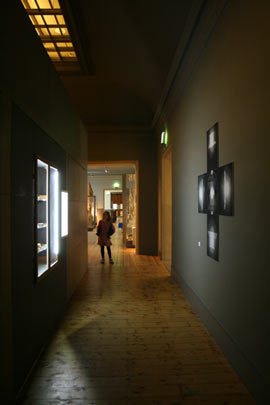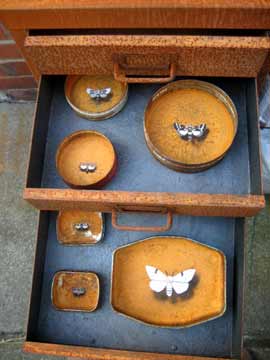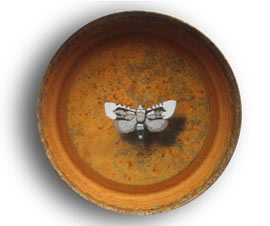Project 2 GOW at GNM
Jan 10th - Feb 18th 2011
Stephen Livingstone
Dust and Shadows (sixty-four extinctions)
Moths are mysterious creatures of the night, blind pilots,
moon-worshippers, sometimes feared, often overlooked. But they are out there, haunting the darkness still.
British Moths are in trouble. In recent years the moth
population has suffered a catastrophic decline. In the past
hundred years sixty-four native species have become extinctand are no longer found in our landscape. There are tragic cases such as that of the Reed Tussock which disappeared with the draining of the Fens in the late 19th century, or the Isle of Wight Wave whose only remaining habitat, a ledge of chalk cliff, collapsed into the sea in 1931. Others simply faded away as cities sprawled, fields were poisoned and hedgerows ripped out.
The collecting habits of early enthusiasts also played a part. Victorian lepidopterists were keen to bag rare species as theytrapped, killed and displayed variations in their thousands.
Killing moths and butterflies was a problem for early collectors. Petiver recommended crushing the head between finger and thumb, Ingpen preferred spearing the thorax with a sharp pin dipped in nitric acid. This was especially effective if the victim was then suspended over boiling water. A red hot wire passed up through the body also worked well as did toasting the creature over a candle flame. The Reverend Morris killed his specimens by gassing them in a jar held over burning brimstone or sulphur. Potassium cyanide eventually became the poison of choice and up to the 1950’s local chemists were happy to mix up a jar for the amateur lepidopterist.
In the stores of the Hope Department of Entomology at
Oxford University Museum is a very unusual collection.
In a stack of old rusting biscuit tins, neatly wrapped in
triangular folds of paper torn from books and periodicals,
are the pressed remains of thousands of moths and butterflies.
This is the unique collection of Edward Bagnall Poulton
(1856 -1943), naturalist and Hope Professor of Zoology.
He was a wealthy and well connected man whose many
acquaintances sent him specimens from across the
British Empire. He married the heiress to the Huntley and
Palmer biscuit company and therefore had access to a
limitless supply of empty tins. The insects kept on coming,too many to record and process, and the tins continued to pileup in Poulton’s office.
There they remained until recently when museum staff set about removing the specimens to safe storage in plastic boxes. Most of the tins have now been destroyed.
Biography
Stephen Livingstone is an artist who lives near Durham in the North East of England. He studied at Wimbledon and Chelsea Colleges of Art.
His work deals with human impact upon landscape and habitat, referencing diverse and often obscure subject matter and touching upon industrial and scientific history. His interest in moths began when commissioned by the British Library to produce work to help promote an understanding of the Lindisfarne Gospels. "Moths and Moons" visited museums and historic sites across the region.
He has worked in response to a number of museum collections and "Dust and Shadows" was originally made for the Dorman Museum in Middlesbrough to mark the bicentenary of the birth of Charles Darwin. He is currently preparing exhibitions for Durham University's Oriental Museum and new Palace Green Gallery as well as acting as associate artist for ROBUST, a research project investigating the regeneration of contaminated industrial sites.
The complete list of the sixty-four extinct moth species can be found at:
www.stephenlivingstone.com/pages/Sixtyfourextinctions.html



